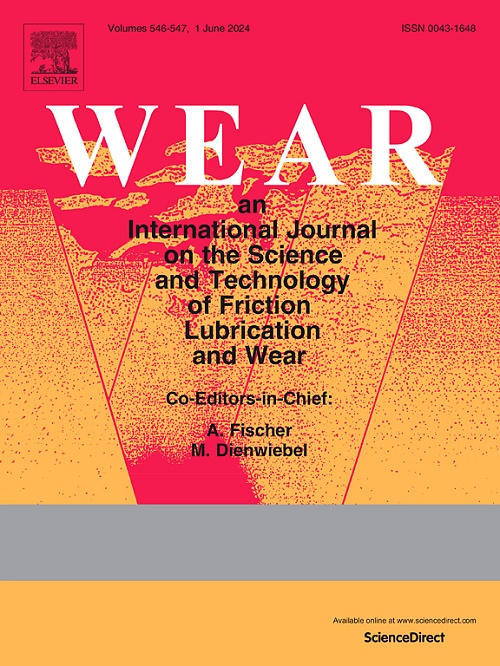Enhanced wear resistance of a die steel via modification of the M7C3 and M23C6 carbides
IF 5.3
1区 工程技术
Q1 ENGINEERING, MECHANICAL
引用次数: 0
Abstract
Large volume fractions of carbides in die steels are a crucial source of high wear resistance. However, the inherent brittleness of micrometer sized carbides reduces the toughness, and can cause embrittlement and even premature failure of die steels. In this work, Cr8Mo2VSi die steel, a typical cold work die steel, has been modified by both reducing the volume fraction and refining the M7C3 carbides. The modified Cr8Mo2VSi die steel was produced via a 0.8 wt% reduction of Cr and a 5 % increase in deformation during composition design and rolling process, respectively. Increased aging-induced precipitation of M23C6 carbides in Cr8Mo2VSi can balance the negative effects of the M7C3 carbides, thereby toughening the die steel and extending its fatigue life. Moreover, M7C3 carbides are prone to peeling during wear because of their inherent brittleness, the stacking faults present, and the low interfacial adhesion. The modified Cr8Mo2VSi die steel exhibited superior toughness and fatigue performance and high wear resistance not only due to the increased participation of M23C6 carbides, but also because of the increased number of high-angle grain boundaries resulting from increased deformation. This study aims to provide guidance for the toughening of die steels with high-carbide contents.
通过改性M7C3和M23C6碳化物提高模具钢的耐磨性
模具钢中大量的碳化物是高耐磨性的重要来源。然而,微米尺寸碳化物的固有脆性降低了韧性,并可能导致模具钢的脆化甚至过早失效。本文对典型的冷作模具钢Cr8Mo2VSi模具钢进行了体积分数降低和M7C3碳化物细化处理。改性Cr8Mo2VSi模具钢是通过在成分设计和轧制过程中分别减少0.8 wt%的Cr和增加5%的变形来生产的。Cr8Mo2VSi中M23C6碳化物的时效析出增加可以平衡M7C3碳化物的负面影响,从而使模具钢增韧,延长其疲劳寿命。此外,由于M7C3碳化物本身具有脆性,存在层错,界面附着力低,在磨损过程中容易剥落。改性后的Cr8Mo2VSi模具钢表现出优异的韧性、疲劳性能和耐磨性,这不仅是因为M23C6碳化物的加入增加了,还因为变形增加了高角度晶界的数量。本研究旨在为高碳化物含量模具钢的增韧提供指导。
本文章由计算机程序翻译,如有差异,请以英文原文为准。
求助全文
约1分钟内获得全文
求助全文
来源期刊

Wear
工程技术-材料科学:综合
CiteScore
8.80
自引率
8.00%
发文量
280
审稿时长
47 days
期刊介绍:
Wear journal is dedicated to the advancement of basic and applied knowledge concerning the nature of wear of materials. Broadly, topics of interest range from development of fundamental understanding of the mechanisms of wear to innovative solutions to practical engineering problems. Authors of experimental studies are expected to comment on the repeatability of the data, and whenever possible, conduct multiple measurements under similar testing conditions. Further, Wear embraces the highest standards of professional ethics, and the detection of matching content, either in written or graphical form, from other publications by the current authors or by others, may result in rejection.
 求助内容:
求助内容: 应助结果提醒方式:
应助结果提醒方式:


